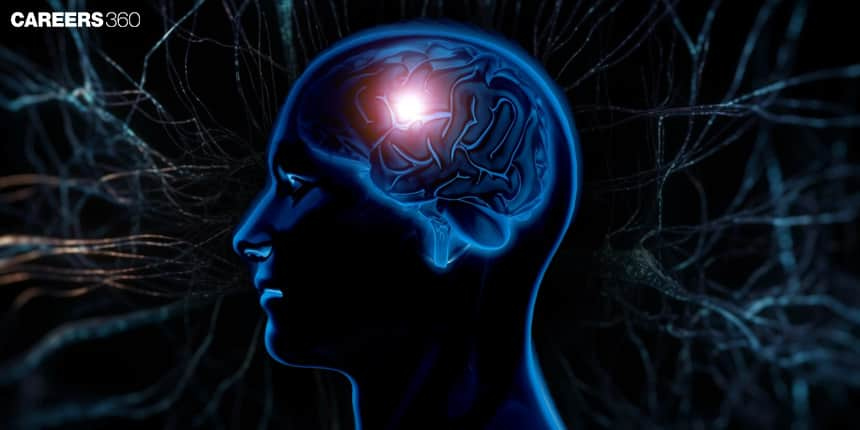Receptors: definition, meaning, Functions, Types, Topics
Receptors are specialized structures in the body that detect and respond to various stimuli, such as light, sound, temperature, and chemicals. They are present in sensory organs and play a crucial role in transmitting signals to the nervous system for processing. In this article, receptors, types of receptors, function of receptors, intracellular receptors, and cell surface receptors are discussed. Receptors is a topic of the chapter Neural Control and Coordination in Biology.
This Story also Contains
- Definition of Receptors
- Types of Receptors
- Function of Receptors
- Intracellular Receptors
- Cell Surface Receptors

Definition of Receptors
Receptors are highly specialised proteins found either on or inside the cells that change conformation upon specific molecule binding. They form an integral part of physiological processes and mediate interactions between the cell and its environment.
Receptors are proteins that participate in detecting signals, among them hormones, neurotransmitters, and sensory stimuli, and acting accordingly. They allow the cell to respond to the changes and thus maintain homeostasis; they participate in growth, immune responses, and sensing.
Types of Receptors
Receptors can be classified in several ways. Knowing the classifications is associated with the functions and mechanisms connected with the different kinds of receptors.
Classification Based on Location
Cell Surface Receptors: These are present on the plasma membrane and the receptor binds to the extracellular molecules.
Intracellular Receptors: These are present inside the cell and the receptors bind to those molecules which can cross the plasma membrane.
Based on Function
Sensory Receptors: These are sensitive to light, sound, temperature, etc.
Neurotransmitter Receptors: These mediate the actions of neurotransmitters within the nervous system.
Hormone receptors: These bind with the hormone and mediate a diversity of physiological processes.
Also Read-
- MCQ practice on Receptors
- Neural Control And Coordination
- Control and Coordination
- Central Nervous System
Function of Receptors
Protein molecules called receptors that are present in the target cell or on its surface perform a number of tasks, such as:
- It controls the binding of cells.
- It facilitates the transmission of signals.
- It regulates the channels in the membrane.
- Additionally, it has a role in immunotherapy and immunological responses.
- Cell metabolisms such as growth, division, and death are induced by it.
Intracellular Receptors
The internal receptors include-
Growth factor receptors
Growth factor receptors are crucial for controlling the division, differentiation, and growth of cells. Among the receptors are:
Vascular endothelial growth factor receptors, neurotrophin receptors, fibroblast growth factor receptors, EGF receptors, epidermal growth factor receptors, insulin-like growth factor receptors, PDGF receptors, platelet-derived growth factor receptors, VEGF receptors, and cytokine receptors
Cytokine receptors
Through their ability to react to signals produced by other organelles, cytokine receptors let cells connect with the extracellular environment. Additionally, it plays a role in cell cycle modifications, mediator release, gene expression, etc.
Cell Surface Receptors
The cell surface receptors include-
B Cell Receptors
B cells or B lymphocytes are other names for these cells. They circulate in the blood and lymph after being formed in the bone marrow. A B cell's primary job is to make antibodies that defend the body from invaders or foreign substances. These cells are essential for both the start of allergic reactions and adaptive immunity.
T Cell Receptors
One type of lymphocyte that is produced in the thymus gland is the T cell. They are in charge of clearing the body of infections.
Granulocyte Receptors
During allergies, infections, and asthma, this granule-containing immune cell type helps release enzymes. Three categories of granulocyte receptors exist: White blood cells, including neutrophils, eosinophils, and basophils
Also Read-
Recommended Video on Receptors
Frequently Asked Questions (FAQs)
GPCRs are associated with extra-cellular ligands. The latter triggers associated intra-cellular G proteins. In turn, the latter initiates the execution of downstream signalling pathways and consequent cellular responses.
Cell-surface receptors stay in the plasma membrane and act through signal molecules outside the cell. In contrast to the intracellular receptors, which are centrally located in the cell, they act through molecules that diffuse freely across the membrane.
Sensory receptors detect environmental stimuli and convert them into electrical impulses interpreted by the nervous system to mediate the perception of touch, temperature, light, sound, and chemicals.
The hormone receptors bind its specific hormone and initiate signal transduction pathways, which then mediate growth, metabolism, reproduction, and many other physiological processes.
Receptors detect and respond to a wide range of signals, allowing cells and hence activities to communicate and coordinate in homeostasis maintenance and physiological process regulation.